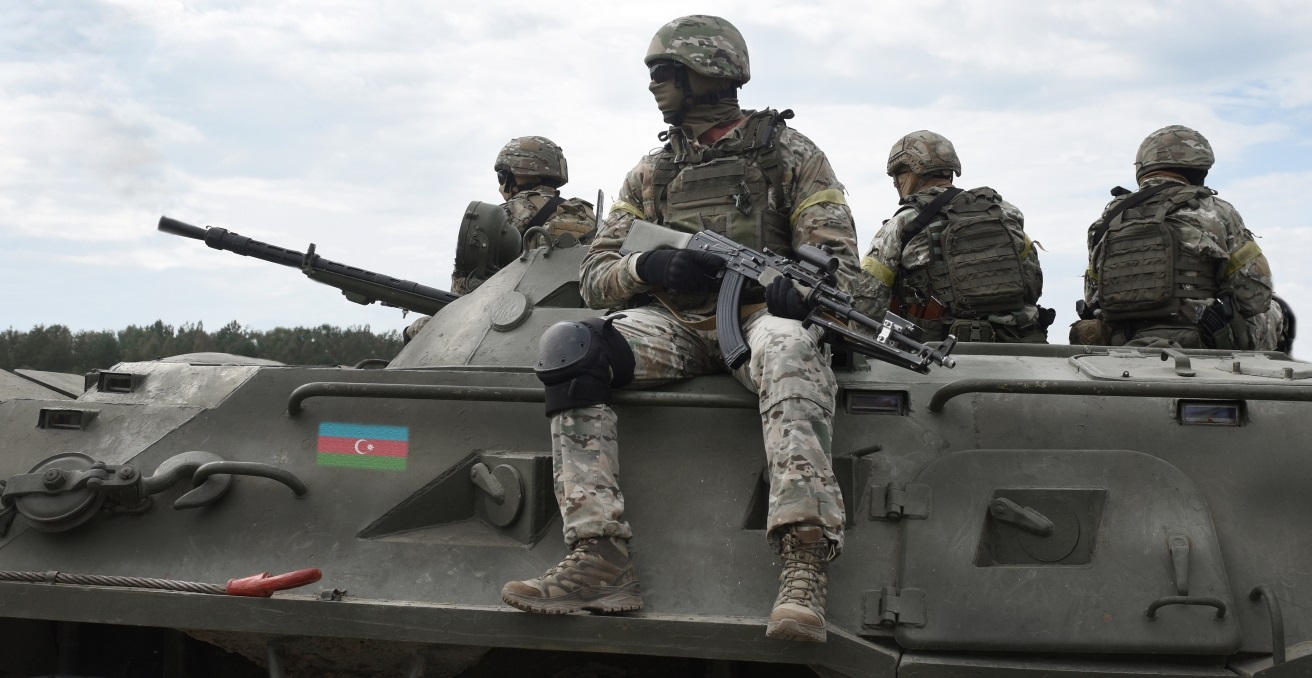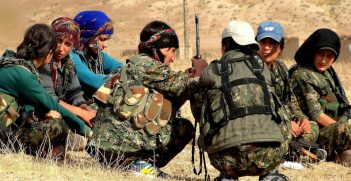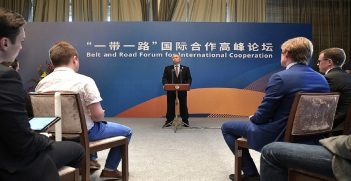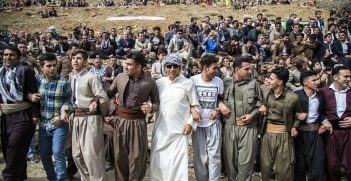Nagorno-Karabakh – The Forgotten Conflict

Armenia and Azerbaijan are embroiled in a bloody fight over the Nagorno-Karabakh enclave, officially recognised as Azerbaijani territory since 1993. The problem is that the majority of those living inside the enclave are ethnic Armenians, and they would much rather live under Armenian rule.
Since the disintegration of the Soviet Union, Nagorno-Karabakh inhabitants have lived in everything but name as part of Armenia, although attempts by their pro-Armenian assembly to create a political link with Yerevan have gone unrecognised, first by its former Soviet masters in Moscow, and then by the international community. This de facto arrangement was bound to flare up into fighting.
In order to bring a halt to military operations during the first military clashes in 1992-1994, the Organization for Security and Cooperation in Europe (OSCE) set up the Minsk Group, co-chaired by France, Russia, and the United States, to monitor the conflict and facilitate negotiations to bring about a solution.
The Nagorno-Karabakh territorial dispute is one of those inextricable conflicts that burns at low intensity until something new happens to trigger a bigger confrontation. Since 1992, not a week goes by without reports of shelling and skirmishes along the demarcation line separating Armenian and Azeri forces.
Nagorno-Karabakh is a mountainous series of wooded highlands dotting the Southern Caucuses. It has been the theater of several population migrations involving Armenians, Azeris, and Kurds. The armed conflict has only made things worse and sparked accusations of ethnic cleansing. There is no immediate or overriding economic benefit for either protagonist.
Historically, Nagorno-Karabakh was in the wrong place at the wrong time. During Soviet times, the enclave was recognised by Moscow as an independent administrative oblast within the Azerbaijan Socialist Republic. In 1988, the Armenian majority and their supporters in Yerevan began the Karabakh movement. Demonstrations broke out in the Armenian capital and inside the enclave seeking to exert its power through an assembly. Efforts to peel off the territory from Azeri control were countered by First Secretary Gorbachev and ruled ultra vires by the Soviet Supreme Court in the early nineties. In 1992, war broke out between Armenia and Azerbaijan. The Armenians had a better trained army and were able to exert their authority over the enclave. In contrast, Azerbaijan, with its lucrative oil revenues, bought expensive military equipment but lacked training. Thus, began a so-called “phony war” reaping a weekly toll of casualties on both sides.
So why the flare up of hostilities now? Once again, both sides blame the other. The Armenian attack in July of this year killing senior Azeri officers did not help, but Turkey’s support for Azerbaijan is of particular interest.
Turkey’s continuing support for Azerbaijan
Turkey has been a constant and active supporter of Azerbaijan. In July 2020, an Armenian drone attack against Azeri forces triggered a tough Turkish-backed response beginning on September 27. The Erdogan governments decision should be analysed in the context of initiatives in Syria and Libya designed to assert Turkish power. French charges that Turkey is using Syrian mercenaries to fight alongside Azeri forces only thickens the plot.
This new, more agressive Turkish regional political activism is due to several key changes: dwindling American influence, a petulant but powerless Europe, and a disempowered multilateral context by the continuing failure of the Minsk Group. Ankara’s vigorous support for Baku may reflect their quest for a new modus vivendi with Russia, like the Astana Group arrangement to settle the Syrian imbroglio.
Georgia – a bemused spectator
Georgia is a South Caucuses player that refuses to back either Azerbaijan or Armenia. Those who believe that Nagorno-Karabakh is essentially a religious conflict between Muslims and orthodox Christians would be misled by the policy of Georgian neutrality. In both Georgia and Armenia, the Orthodox Church rules in tandem with the political class. A pro-Armenia stance would raise the ire of Turkey, while a pro-Azeri stand would alienate the Church following and resurrect memories of their bitter war with Russia over South Ossetia and Abkhazia in 2008.
Cooling Russia-Armenia relations and a rise in Armenian nationalism
Relations between Armenia and Russia have cooled in the last two years. Russia has made it clear that Armenia must return the disputed territories to Baku, leaving Armenia far more isolated than before.
The rise of Armenian nationalism is one of the reasons for the cooling of relations with Russia. The Armenian government is keenly aware that one of the causes of this democratic resurgence is the presence of a growing rebellious and fearless youth movement in the South Caucasus. Like in Kyrgyzstan and Belarus, the Armenian youth have few economic opportunities, and are now looking to politics to express themselves.
Armenia’s more belligerent role in negotiations with Baku, despite Russians calls for negotiation and return of territories to Baku, is due to political imperatives for its own survival. Armenian nationalism is not in Russian interest and poses an obstacle to any peaceful resolution with Azerbaijan, in addition to adding another pressure point to Russia’s expanding list of regional concerns.
Azerbaijan steadily advancing its claim over Nagorno-Karabakh
The most recent clashes have demonstrated that Baku is increasingly in the driver’s seat with regard to its claim over the de facto arrangement of 1992. Turkey’s strong public support and a cooling of Armenia’s major supporter, Russia, combined with four UN Security Council resolutions since 1992 recognising Nagorno-Karabakh as Azeri territory, form the substance of Baku’s case. The war is popular in Azerbaijan. On the ground, new drones and other military equipment have ensured that a 1992 result will not occur this time. Baku’s attempts at negotiating with Armenia have failed, illustrating from the Russian perspective a lack of will from the Armenian side. Whatever the de facto arrangement is on the ground in terms of ethnic realities, international recognition of Nagorno-Karabakh is under Azerbaijan sovereignty and unlikely to be rolled back.
Iran remains fairly neutral
Had the experiment with Red Kurdistan worked in a portion of the disputed territories, this might have been a different story. The dispersal of the Shia Kurds after 1992 was supported by both Baku and Yerevan. No one wanted a Kurdish free state in the South Caucasus. The victims of ethnic cleansing due to this conflict are not only ethnic Azeris and Armenians. They too practiced a form of ethnic cleansing to rid the area of Kurds. This said, the Iranian leadership is acutely aware of Turkish moves in the region.
The clash of Persian and Ottoman interests characterise the history of the region. Reports of Turkey using Syrian opposition fighters in Nagorno-Karabakh mirror the use of Iranian Hezbollah operatives fighting in Syria alongside Russian and Assad forces. For Iran, there is little to gain from any settlement and return of territory to Baku. An Azeri victory in the disputed territory would translate into expanding Turkish influence. The presence of Iran in the Astana Group is as much to monitor Turkish motives and future actions as it is to find a settlement in Syria. As for Nagorno-Karabakh, for Iran, it is a no-win situation.
Conclusion
The recent flare up of conflict in Nagorno-Karabakh was inevitable as it is instructive for understanding new operative regional political trends and developments. Moscow is managing an increasing number of regional pressure points and has to deal with Armenian nationalism, one of the by-products of the Velvet Revolution.
The Turks and Russians are now focused on the American election in early November. In a real sense, both Erdogan and Putin have been able to curry the favor of American President Donald Trump. November 3 may change all that. The window of opportunity in Nagorno-Karabakh may be narrowing. A Biden presidency might see a renewal of interest in Kurdish issues, human rights, and possibly a dumping of the failed US policy of leading from behind, which has been the sine qua non for Russia and Turkey to pursue their regional interests more aggressively.
For Turkey, an American revival of interest in the region would be most unwelcome. Since the July 2016 coup d’état in Turkey, the Gulenist movement, blamed for the coup by President Erdogan, no longer has Turkey’s back in key Western countries. As a consequence, the Armenian lobby has had free reign. Elsewhere, political support for Turkey has dwindled despite its membership in NATO.
A reinvigorated NATO and an Atlantic alliance freed from Trump’s constant criticism and pettiness spells trouble for both Erdogan and Putin. Their first tests will be along the fault lines surrounding the Russian empire: Belarus, Ukraine, Kyrgyzstan, and Nagorno-Karabakh. For Erdogan, the Kurdish issue, domestic human rights abuses against the Gulenists and journalists, and his Middle Eastern policy are targets for any Western renaissance.
Dr Bruce Mabley is the director of the Mackenzie-Papineau Group think tank based in Montreal devoted to analysis of international politics.
This article is published under a Creative Commons Licence and may be republished with attribution.





